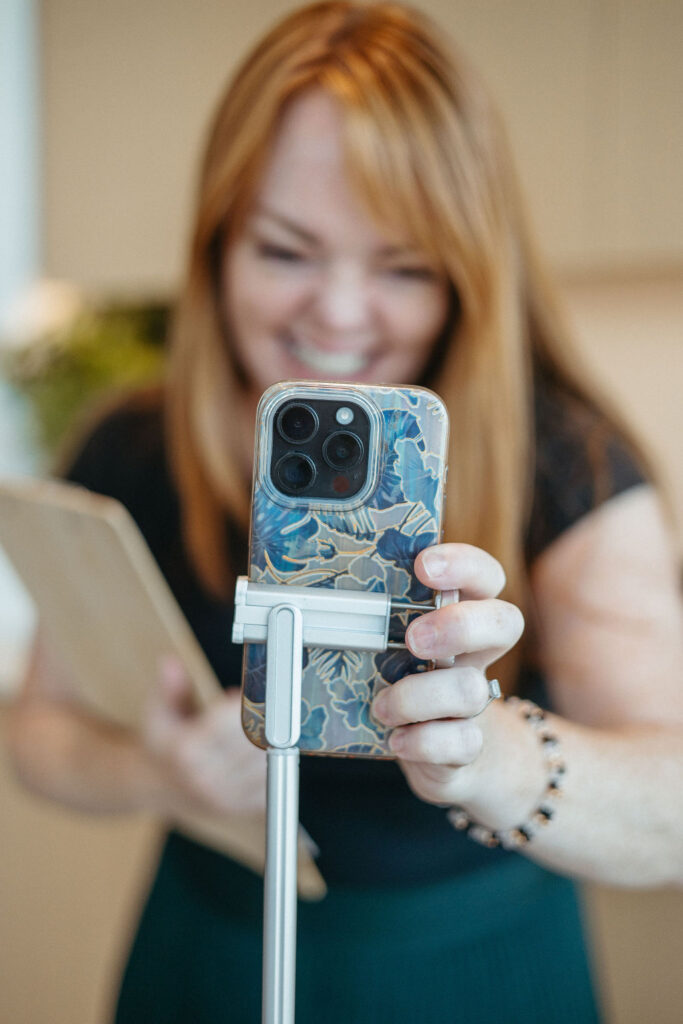If you haven’t started building your email list yet, you’re missing out on one of the most valuable assets for your business. Imagine waking up tomorrow to find Instagram completely down—panic mode, right?
When I ran my first online summit in 2023, I was shocked by how many successful content creators in my community didn’t have email lists. The instructions for the summit were simple: gather a group of inspiring women and work together to create an incredible event that serves our audience. However, one key requirement was that each speaker had an email list.
Why? Because while it may feel great in the short term, why would we invest so heavily in assets we don’t actually own?
And let me tell you, I struggled to find Content Creators who were building their lists and ended up skipping that portion of the assignment 😅. ( I was in a program by Danielle Wiebe that taught me how to run a successful Virtual Summit.)
You can read about the Rise and Monetize Creators Summit here.
Reality Check
If you’re in it for the long game and want to build a business that’s truly yours, remember this: social media isn’t ours to control.
We’ve all heard the horror stories—creators and businesses losing their accounts overnight, locked out of the platforms they spent years building. And without an email list? They were left with nothing but memories of the thriving communities they once had.
If you haven’t started building your email list yet, take this as your sign to start. Future you will thank you. 🚀

Why You Need an Email List
If you’re serious about growing your business and protecting the community you’ve worked so hard to build, it’s time to prioritize your email list. An email list is more than just a collection of addresses—it’s a powerful business asset that gives you direct access to your audience without relying on algorithms or social media platforms.
Think of it as your personal connection hub. Unlike social media, where your reach can be limited or disrupted, an email list is a space you fully control. It ensures your messages land directly in your audience’s inbox, perfect for launching new products, sharing updates, offering promotions, and building deeper relationships with your community.
Whether you’re starting or looking to scale, an email list is a game-changer for fostering meaningful connections and driving your business to the next level.

How to Start Building Your Email List
Ready to get started? Here’s how you can start building your list today—plus a breakdown of the best tools, including free options, to help you make it happen!
But First A Hot Tip
If you’re anything like me when I first started, you might think you need a website to start collecting emails—but that’s just not true. With the tools available today, you can create sign-up forms and share the links instantly, allowing you to start building your email list right now. No website required!
Step 1: Choose an Email Marketing Platform
The first step in building your email list is selecting a platform to manage your contacts, design emails, and automate your campaigns. Since starting my business, I’ve used three email marketing platforms, but I have been using Flodesk for the last year and a half because I find it very user-friendly and love the aesthetic templates and the fact that I can also use it to process payments.
Here are some popular tools:
1. Flodesk
- Flodesk is perfect for entrepreneurs who love visually stunning, on-brand emails.
- It is now integrated with Canva, so creating gorgeous emails just got even easier.
- Unlimited emails and subscribers for one flat fee.
- Easy-to-use templates for creating opt-in forms, landing pages, newsletters, and even payment processing.
- Special Offer: Get 50% off your first year using my affiliate link.
2. Mailchimp
- Free for up to 500 subscribers and 3,500 monthly email sends.
- Offers pre-designed templates, automation, and integrations with websites and social media.
- Great for beginners, starting with a small list.
3. ConvertKit
- Free for up to 1,000 subscribers with limited features, including email broadcasts and landing pages.
- Perfect for creators who want to focus on building relationships.
- Upgrade for automation and advanced features.
4. HubSpot
- Free plan includes email marketing, forms, landing pages, and basic CRM tools.
- Excellent for entrepreneurs who want to combine email marketing with customer relationship management.
5. Sendinblue
- Free plan allows up to 300 emails per day to unlimited subscribers.
- Includes automation, customizable templates, and SMS marketing capabilities.
6. MailerLite
- Free for up to 1,000 subscribers and 12,000 monthly email sends.
- Offers drag-and-drop editors, automation, and landing pages.
7. Zoho Campaigns
- Free for up to 2,000 subscribers and 6,000 emails per month.
- Great for those already using Zoho’s suite of business tools.
Step 2: Create a Lead Magnet
A lead magnet is an incentive that encourages people to join your email list. Here are some ideas:
- Free Guides: A helpful PDF like “10 Tips for First-Time Entrepreneurs.”
- Discount Codes: Offer a 10% discount for signing up.
- Free Mini-Courses: Share your expertise with a series of valuable lessons.
- Exclusive Content: Behind-the-scenes updates, templates, or checklists.
Step 3: Set Up Opt-In Forms
Your email marketing platform will provide tools to create forms or landing pages where people can sign up for your list. Place these forms:
- On your website’s homepage.
- At the end of blog posts.
- In your website’s footer.
- On a dedicated landing page shared via social media.
Step 4: Promote Your Email List
Here’s how to start growing your list:
- Social Media: Create posts and stories that drive followers to your sign-up link.
- Events: Collect email addresses at in-person or virtual events.
- Waitlists: Create waitlists for upcoming events or special announcements that people can opt into for first access or special pricing.
- Collaborations: Partner with other entrepreneurs to cross-promote email lists.
- Website Pop-Ups: Add a timed or exit-intent pop-up inviting visitors to subscribe.
Free Tools to Collect Email Addresses
If you’re starting out, here are free tools that make it easy to gather email addresses:
- Google Forms: Create a simple form to collect emails for free.
- Typeform: A sleek, interactive way to capture subscriber information (free for limited forms).
- Facebook Lead Ads: Run ads designed to collect email addresses directly from Facebook users.
- LinkedIn: Use LinkedIn’s free tools to share landing pages or collect emails during events.
Step 5: Nurture Your Subscribers
Growing your email list is only the first step. Keep your audience engaged by sending regular emails with:
- Helpful tips or resources.
- Behind-the-scenes updates.
- Exclusive promotions or discounts.
- Personal stories that build connection.
Start Building Your List Today
With so many tools and free options, there’s no better time to start growing your email list. Platforms like Flodesk, Mailchimp, and ConvertKit make creating beautiful, impactful emails easy, while free tools like Google Forms and Typeform help you collect addresses without spending a dime.
Ready to start? Don’t forget to use my affiliate link to get 50% off Flodesk for your first year—perfect for creating emails your audience will love!
Let me know how your email list-building journey goes. You’ve got this!
xx
C
About the Author

@IAmChristineCoughlin
@YVR.Creatives
Christine Coughlin is a content creator and the founder of YVR Creatives, an inclusive community dedicated to empowering heart-led female entrepreneurs to share their messages and grow their businesses.
She helps women amplify their voices through VIP content filming sessions by guiding them to feel confident on camera and create impactful content.
Christine also curates inspiring in-person events, including monthly masterminds, social events, and lunch-and-learns, offering opportunities for women to network, share knowledge, and connect within a supportive community.
Christine lives in the suburbs of Vancouver with her husband, three kids, and one million plant babies. A self-proclaimed personal development junkie, she finds peace and inspiration in nature, whether hiking through the woods or spending time on the water.
